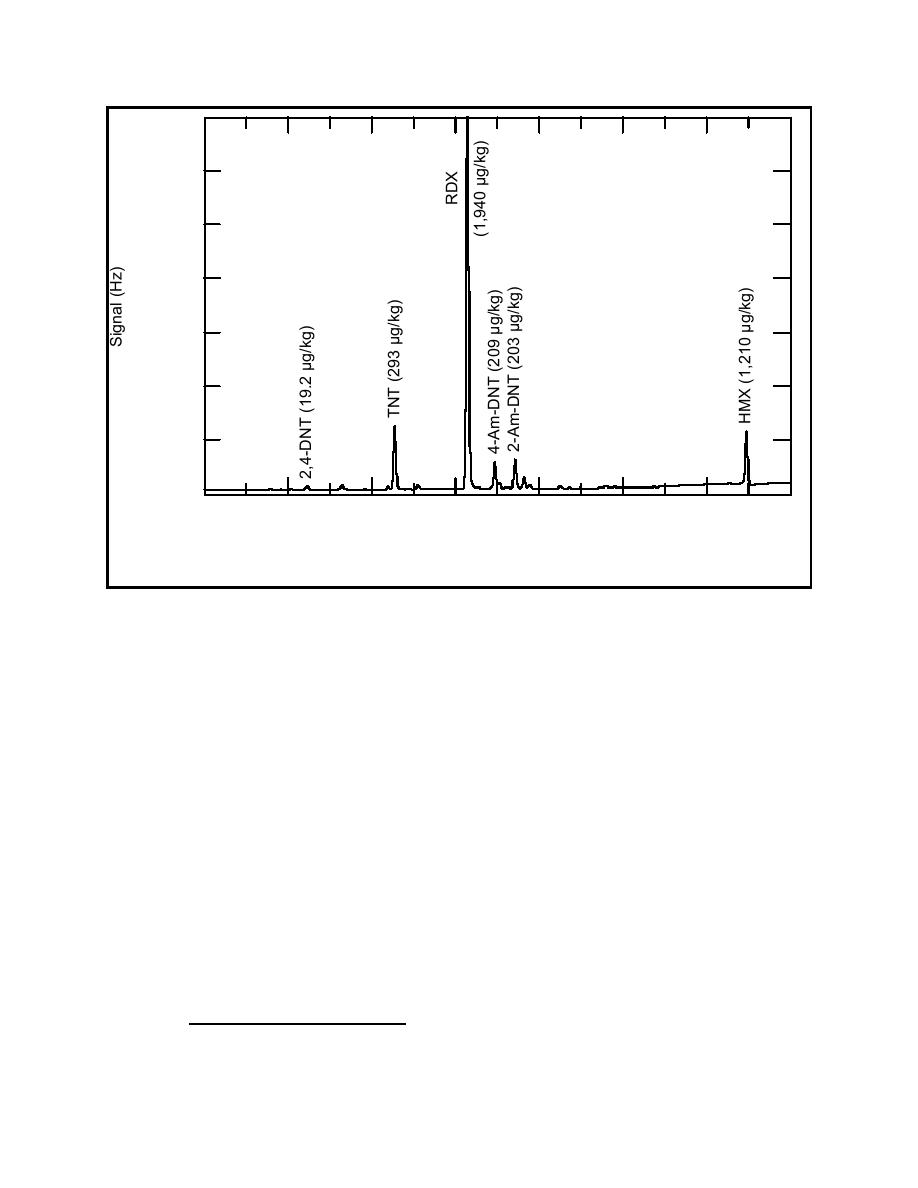
70,000
RTX-5
60,000
Sample #122
50,000
40,000
30,000
20,000
10,000
0
5
7
9
11
13
15
3
17
Time (min.)
Figure 11. GC-ECD chromatogram of extract from surface soil collected from Fort Lewis hand grenade
range
Therefore, as found elsewhere (Jenkins et al. 1997, 1998), explosives concentra-
tions in surface soils are spatially very heterogeneous within this range, even
over short distances. Obtaining representative samples for establishing a mean
concentration using discrete soil samples would be difficult.
As stated previously, results from the analysis of a hand grenade casing
remaining after a low-order detonation at Fort Lewis revealed the presence of
residual Composition B. The ratio of RDX to HMX in the sample removed from
the casing was 7.61. The ratios of RDX to HMX from analysis of individual soil
samples varied tremendously, but the ratio obtained using the median values was
2.14 for the surface soil and 3.65 for soil collected at the 10-cm depth. These
reduced ratios are interpreted to indicate that RDX has preferentially leached
deeper into the soil profile because of a higher thermodynamic solubility and a
Results from the analysis of soil samples from the Fort Richardson hand
grenade range indicated detectable concentrations of RDX, TNT, 4ADNT, and
2ADNT in most surface soil samples (Table 4). Diagrams for RDX and TNT are
presented in Figures 12 and 13, respectively. As found for the Fort Lewis range,
1
Personal Communication, 2000, Dr. Paul H. Miyares, Chemist, Micromass Corporation,
Beverly, MA.
26
Chapter 2 Characterization of Explosives Contamination at Military Firing Ranges




 Previous Page
Previous Page
